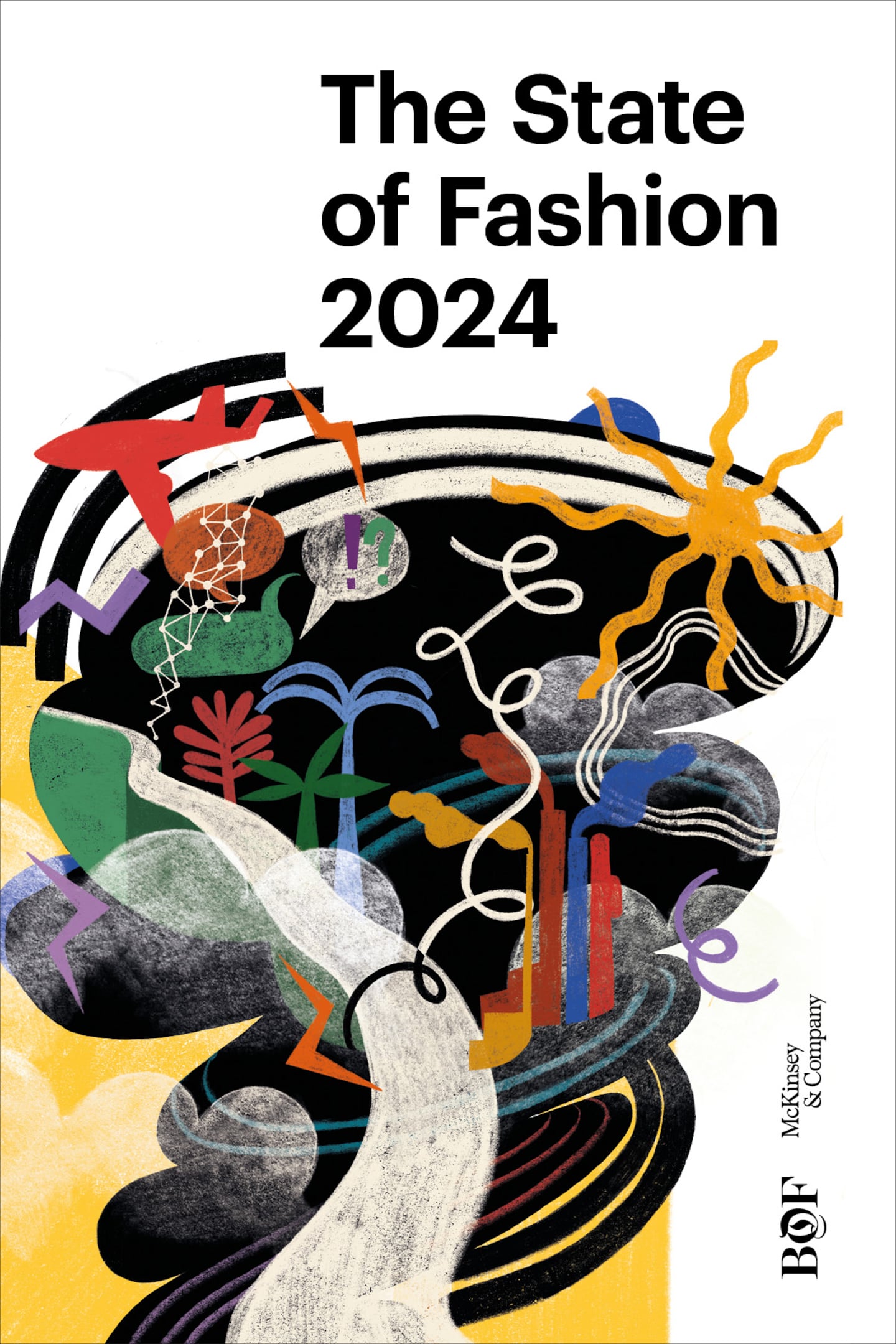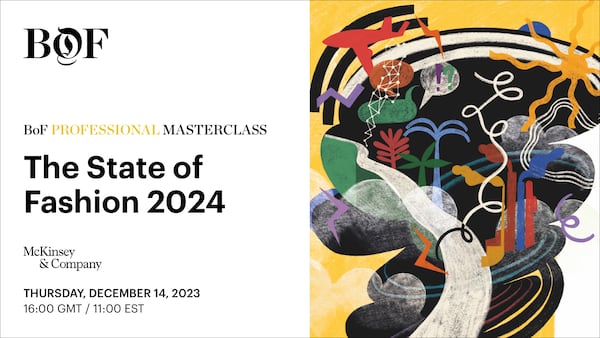
The Business of Fashion
Agenda-setting intelligence, analysis and advice for the global fashion community.

Agenda-setting intelligence, analysis and advice for the global fashion community.

With clouds brewing on the horizon, recent years might provide a sense of how the fashion industry will ride out 2024.
The industry has shown its resilience in recent years, having achieved more than double the levels of economic profit in 2022 than in all the years between 2010 and 2020 except for one, yet by 2023 the industry was facing challenges that were both persistent and deepening. On a regional basis, Europe and the US experienced slow growth throughout the year, while China’s initially strong performance decelerated in the second half. Though the picture for luxury was more positive than the rest of the market in the first half of 2023, consumers’ appetite to shop for fashion was diminishing across the board by the second half, leading to slowing sales and uneven performance. Even luxury began to feel the heat after a lengthy period of growth that benefitted the entire industry.
Looking to 2024, fashion leaders are anticipating further headwinds and are uncertain about prospects for the year ahead.
Looking to 2024, fashion leaders are anticipating further headwinds and are uncertain about prospects for the year ahead. Indeed, the word most often mentioned by executives in the BoF-McKinsey State of Fashion 2024 Executive Survey was “uncertainty.” Consumer confidence will remain fragile, although for different reasons in key markets of the US, Europe and China. As a whole, the fashion industry is predicted to achieve year-on-year retail sales growth of between 2 percent and 4 percent in 2024.
Aside from economic challenges, one pressure point that cannot be ignored in the year ahead is the climate crisis. After numerous extreme weather events in 2023, leading companies are likely to bolster their resilience to climate impacts in 2024. Inaction is no longer an option: extreme climate events are already placing the lives and livelihoods of fashion workers in danger and could put at risk an estimated $65 billion of apparel exports by 2030.
ADVERTISEMENT
How should fashion companies prepare? With cost-saving tactics mostly exhausted, the focus is expected to be on growing sales, underpinned by new pricing and promotion strategies, rather than volume increases — across the industry, net intent to raise prices is more than 50 percent, according to the BoF-McKinsey Executive Survey. Cost pressures are predicted to abate, with less than 20 percent of executives expecting the cost of goods sold and selling, general and administrative expenses to rise more than 5 percent.
In 2024, the industry is expected to bear the impact of fluctuations in demand that have punctuated the past few years. It is during such times that supply chains experience a “bullwhip effect,” in which small sales variations cause high levels of volatility, leading to factory underutilisation, layoffs and delayed infrastructure investments. To navigate these challenges, fashion brands should consider investing in developing more transparent and collaborative relationships with their suppliers.
Meanwhile, fashion supply chains could be under increased scrutiny amid incoming regulations on several fronts. This includes new sustainability rules in the European Union and the US, which will require brands and manufacturers to double down on initiatives aimed at cutting greenhouse gas emissions and waste, while building business models that protect and preserve natural resources. The fast-fashion industry, which has already been buffeted by a cohort of companies like Shein and Temu that are not only faster and cheaper but also fuelled by big marketing budgets, may be particularly pressured by these new regulations.
When seeking to identify growth levers, one area that respondents to the BoF-McKinsey Executive Survey said they are homing in on is generative AI, where there is significant potential in creativity-focused use cases in design and product development. Some 73 percent of executives expect to prioritise gen AI in 2024, but many may face a talent gap, given that just 5 percent said they are ready to make best use of the technology.
Marketing is another area of focus. After years of relying on performance marketing, brand marketing may increasingly take centre stage in the year ahead, with 71 percent of executives planning to spend more on brand marketing than in 2023 in a bid to cultivate emotional connections with customers. At the same time, brands may find consumers are more demanding when it comes to authenticity and relatability, leading to a shift towards influencers who are more quirky, vulnerable and less-polished. Forward-looking companies should consider leaning into this new wave of content creators to enhance their brand stories.
As consumers travel with renewed enthusiasm in the year ahead, fashion companies may need to revamp how they engage with consumers who are shopping abroad. For the first time since the Covid-19 pandemic, travel levels in 2024 are projected to exceed those in 2019. Chinese travel to overseas destinations is expected to reach between 70 percent and 100 percent of pre-pandemic levels in 2024. As these shoppers return, there is a growing desire for brand experiences and traditional shopping trips in both tourist destinations and second-tier cities. Alongside a return to travel, there is also a shift to spending more time outdoors, which will likely drive up demand for outdoor wear in 2024, further blurring the lines between functionality and style.
All told, executives are bracing for a strategically challenging year ahead. Fashion leaders need to plan carefully for a range of different scenarios, become better equipped to manage pricing and get ready to accelerate when the storm begins to clear.
1. Fragmented Future
ADVERTISEMENT
In 2024, the global economic outlook will likely continue to be unsettled. As new and ongoing financial, geopolitical and other challenges weigh heavily on consumer confidence, fashion markets in the US, Europe and China are facing differing headwinds, requiring suppliers, brands and retailers to bolster contingency planning, among other measures.
2. Climate Urgency
The frequency and intensity of extreme weather-related events in 2023 mean the climate crisis has become even more visible, leaving the fashion value chain especially vulnerable. With climate risks worsening across continents, the fashion industry can’t hold off any longer on building resilience into its supply chains and helping to abate emissions.
3. Vacation Mode
Consumers are gearing up for the biggest year of travel since before the pandemic. But a shift in values means travellers have a different set of expectations, even as shopping remains high on the agenda. Brands and retailers should consider refreshing distribution and category strategies to meet travellers wherever they are.
4. The New Face of Influence
It’s time for brand marketers to update their influencer playbooks. A new guard of creative personalities is gaining brands’ attention, winning trust and fandom among key audiences. Working with these personalities in 2024 will require a different type of partnership, an emphasis on video and a willingness to relinquish a degree of creative control.
5. Outdoors Reinvented
ADVERTISEMENT
Technical outdoor wear has been propelled by consumers’ post-pandemic embrace of healthier lifestyles as well as “gorpcore,” and is likely to accelerate even further in 2024. More outdoor brands will likely launch lifestyle collections while lifestyle brands embed technical elements into collections, further blurring the lines between functionality and style.
6. Gen AI’s Creative Crossroad
After generative AI’s breakout year in 2023, use cases are emerging across creative industries, including fashion. Capturing the value of this transformative technology in 2024 will require fashion players to look beyond automation and explore its potential to augment the work of human creatives.
7. Fast Fashion’s Power Plays
Fast-fashion competition will likely become even fiercer in the year ahead. Challengers, led by Shein and Temu, are changing tactics around price, customer experience and speed. Success for disruptors and incumbents will likely hinge on their ability to adapt to evolving consumer preferences, while navigating regulations that may impact the industry.
8. All Eyes on Brand
Brand marketing will likely be back in the limelight in the year ahead as the fashion industry confronts a shifting landscape in which performance marketing no longer reigns. Consumers’ emotional connections to brands will likely be critical as fashion marketers reorientate their playbooks to emphasise long-term brand-building strategies.
9. Sustainability Rules
The era of the fashion industry self-regulating sustainability is drawing to a close around the world. Across jurisdictions, new rules could have a widespread impact on both consumers and fashion players. Brands and manufacturers need to revamp business models to align with the changes ahead.
10. Bullwhip Snaps Back
Changes in consumer demand have resulted in the “bullwhip effect,” where cuts to orders increase in magnitude at different parts of a supply chain, putting pressure on fashion’s suppliers. Now, if supply is to keep pace with anticipated renewed demand, brands and retailers should consider focusing on transparency and bolstering strategic partnerships.

BoF’s Imran Amed and McKinsey’s Achim Berg unpack what opportunities and challenges businesses should look out for in the year ahead.

Imran Amed is the Founder, CEO and Editor-in-Chief of The Business of Fashion. Based in London, he shapes BoF’s overall editorial strategy and is the host of The BoF Podcast.
From analysis of the global fashion and beauty industries to career and personal advice, BoF’s founder and CEO, Imran Amed, will be answering your questions on Sunday, February 18, 2024 during London Fashion Week.
The State of Fashion 2024 breaks down the 10 themes that will define the industry in the year ahead.
Imran Amed reviews the most important fashion stories of the year and shares his predictions on what this means for the industry in 2024.
After three days of inspiring talks, guests closed out BoF’s gathering for big thinkers with a black tie gala followed by an intimate performance from Rita Ora — guest starring Billy Porter.